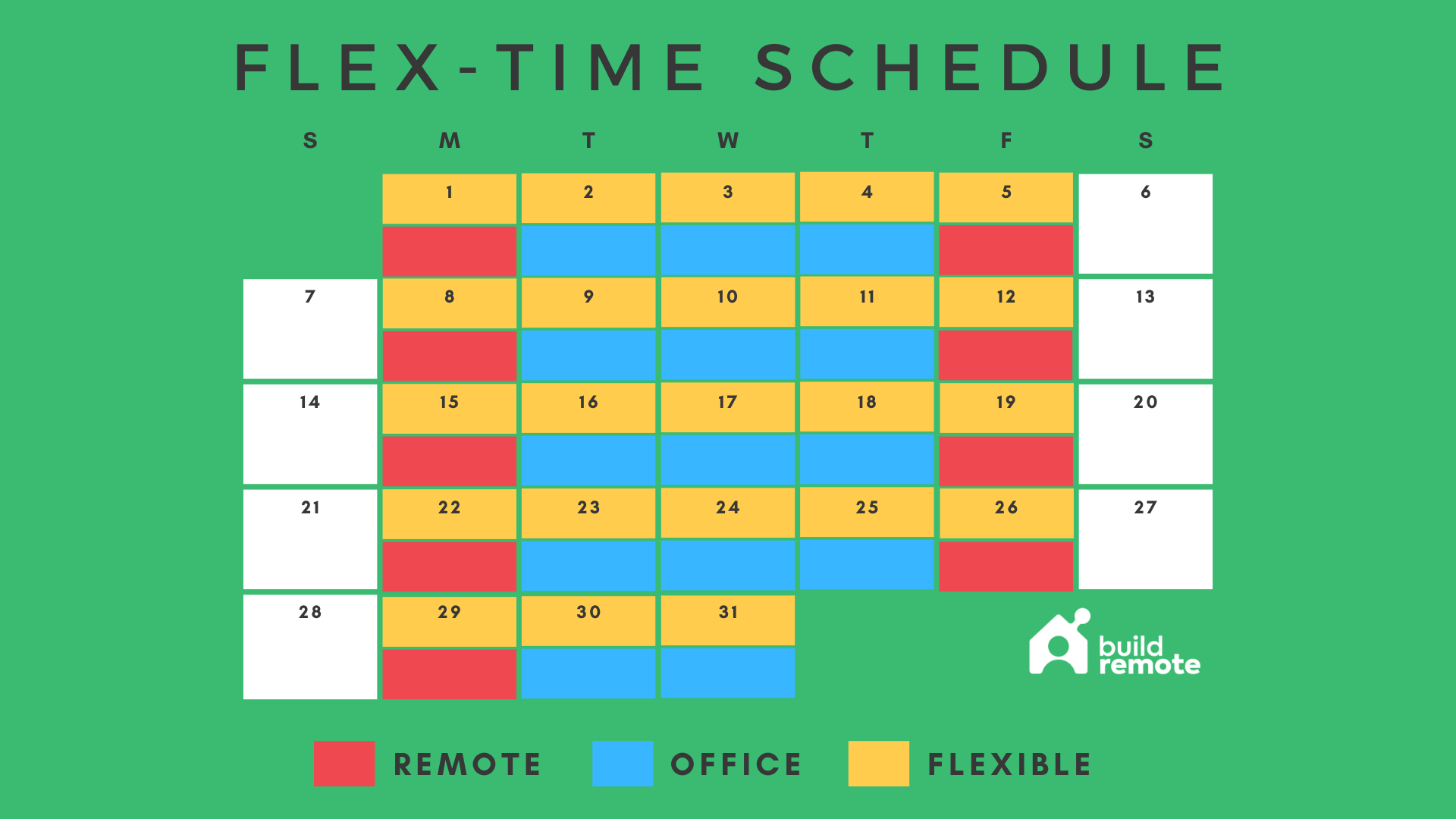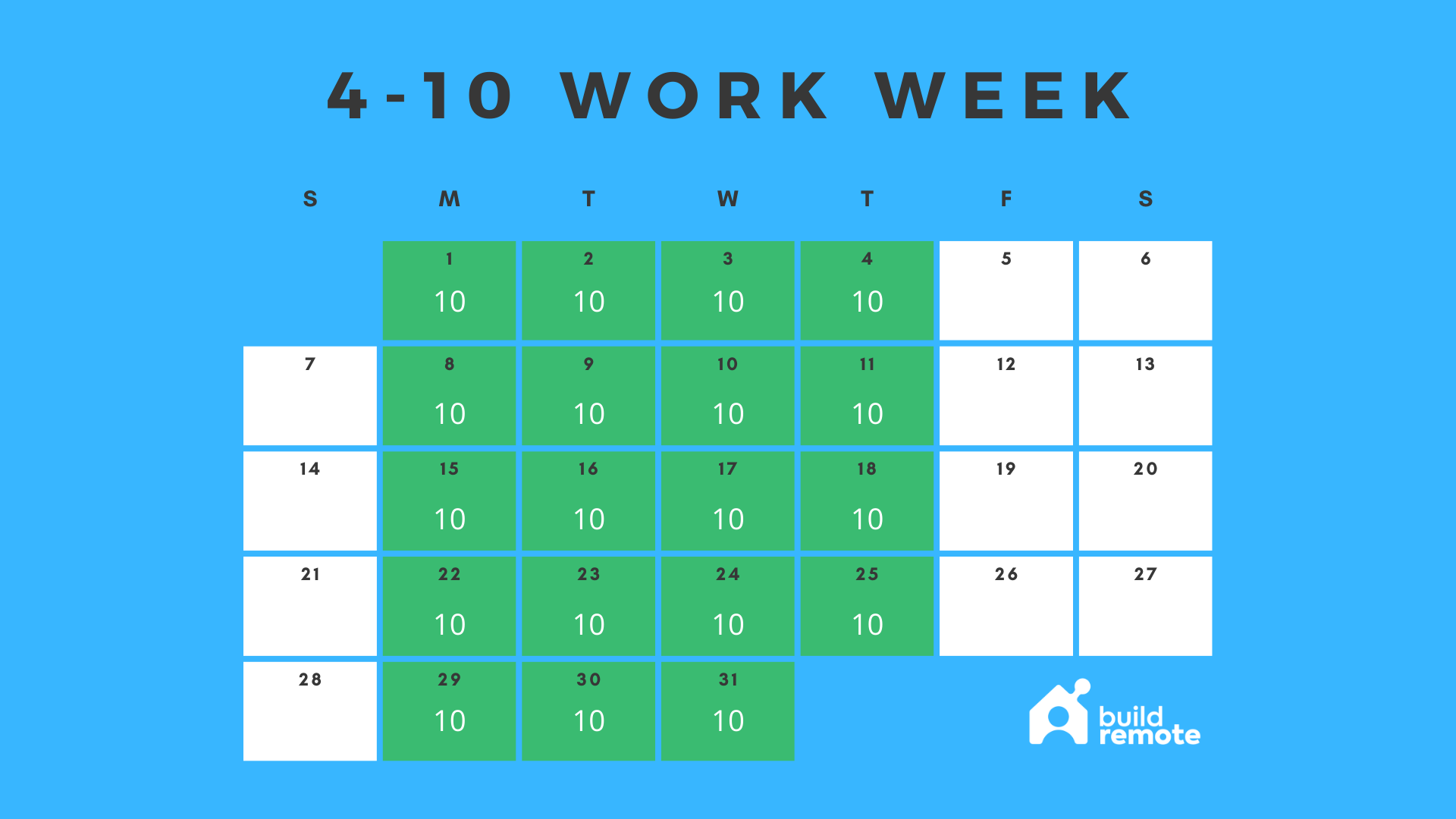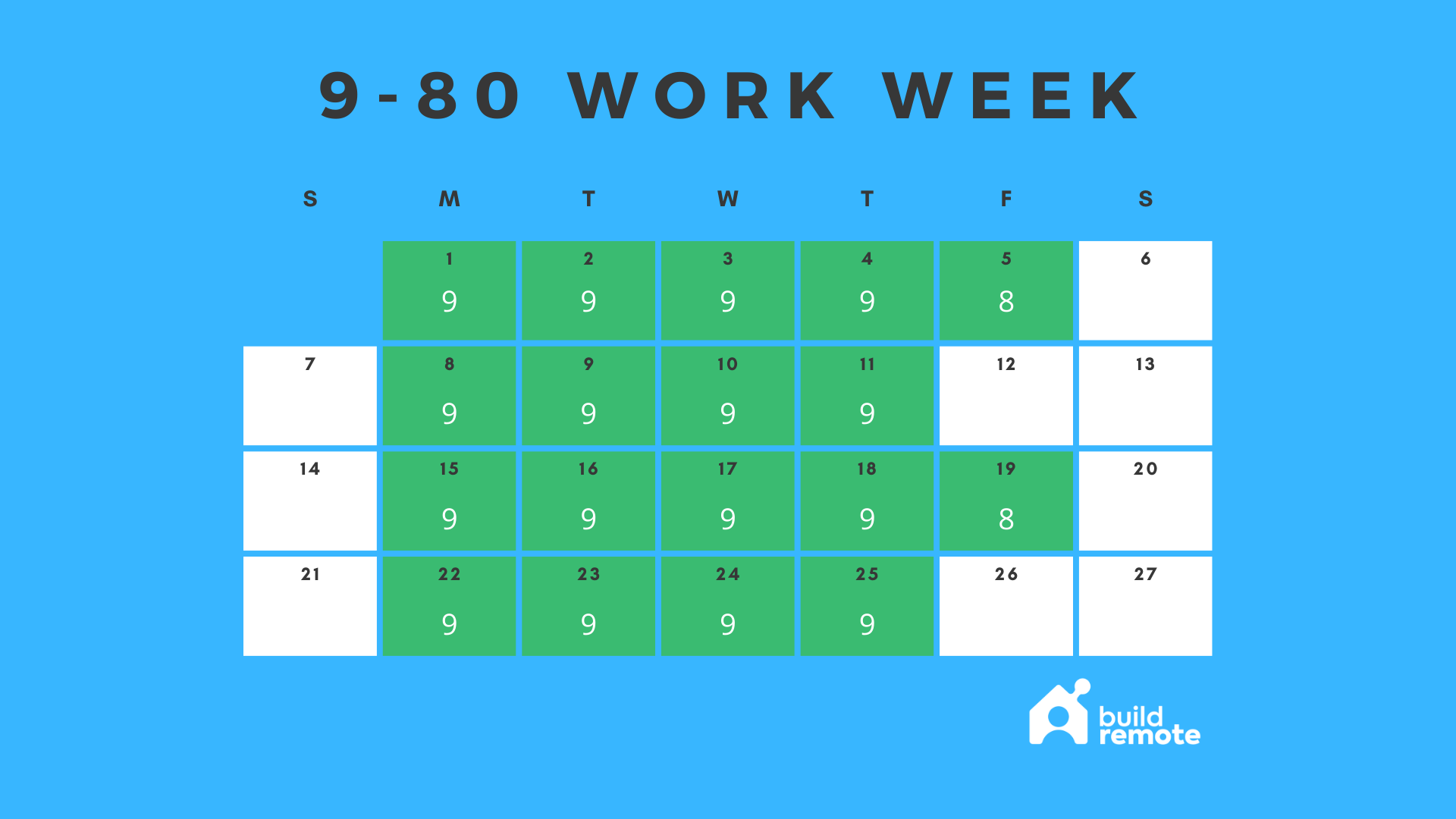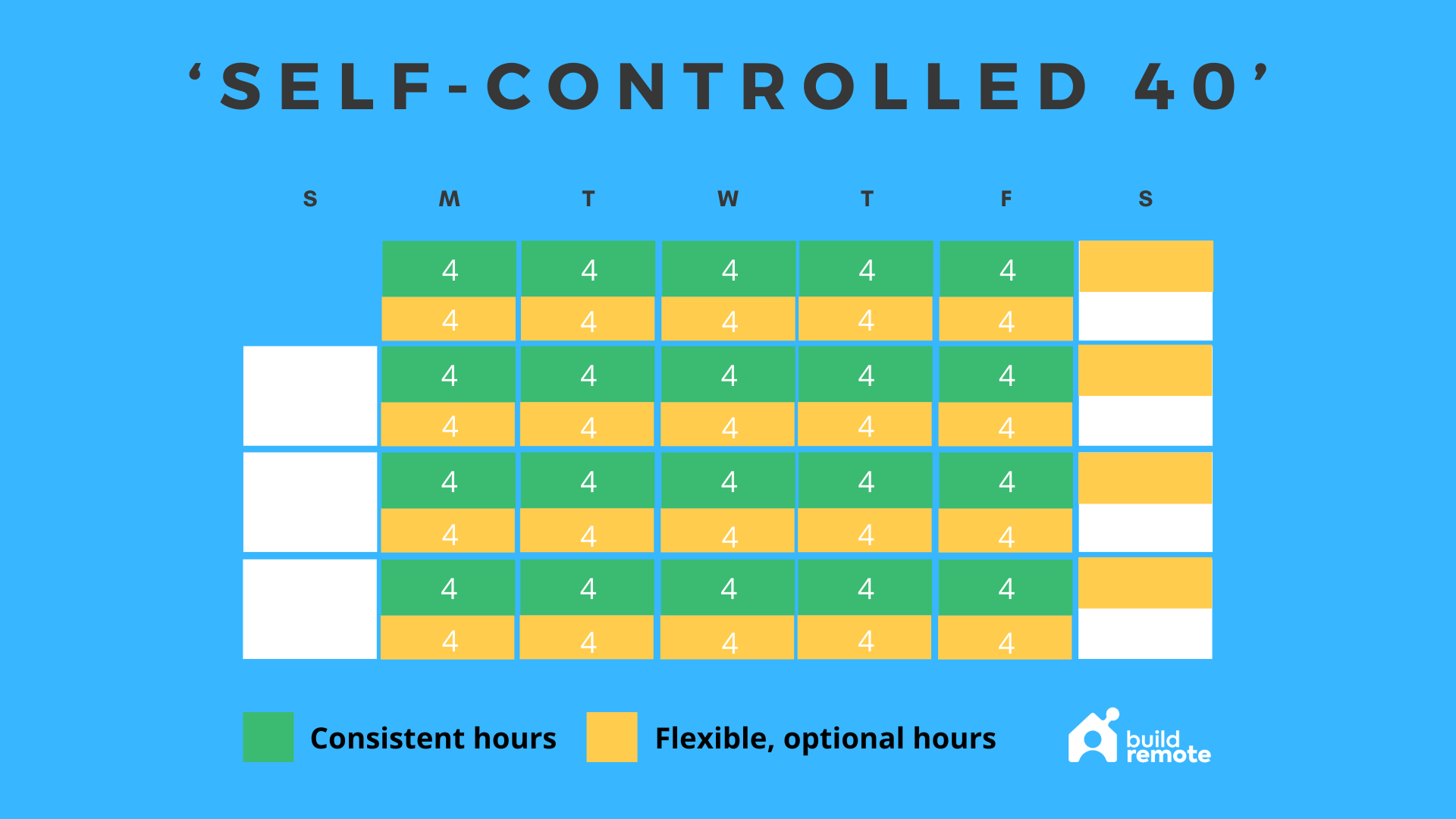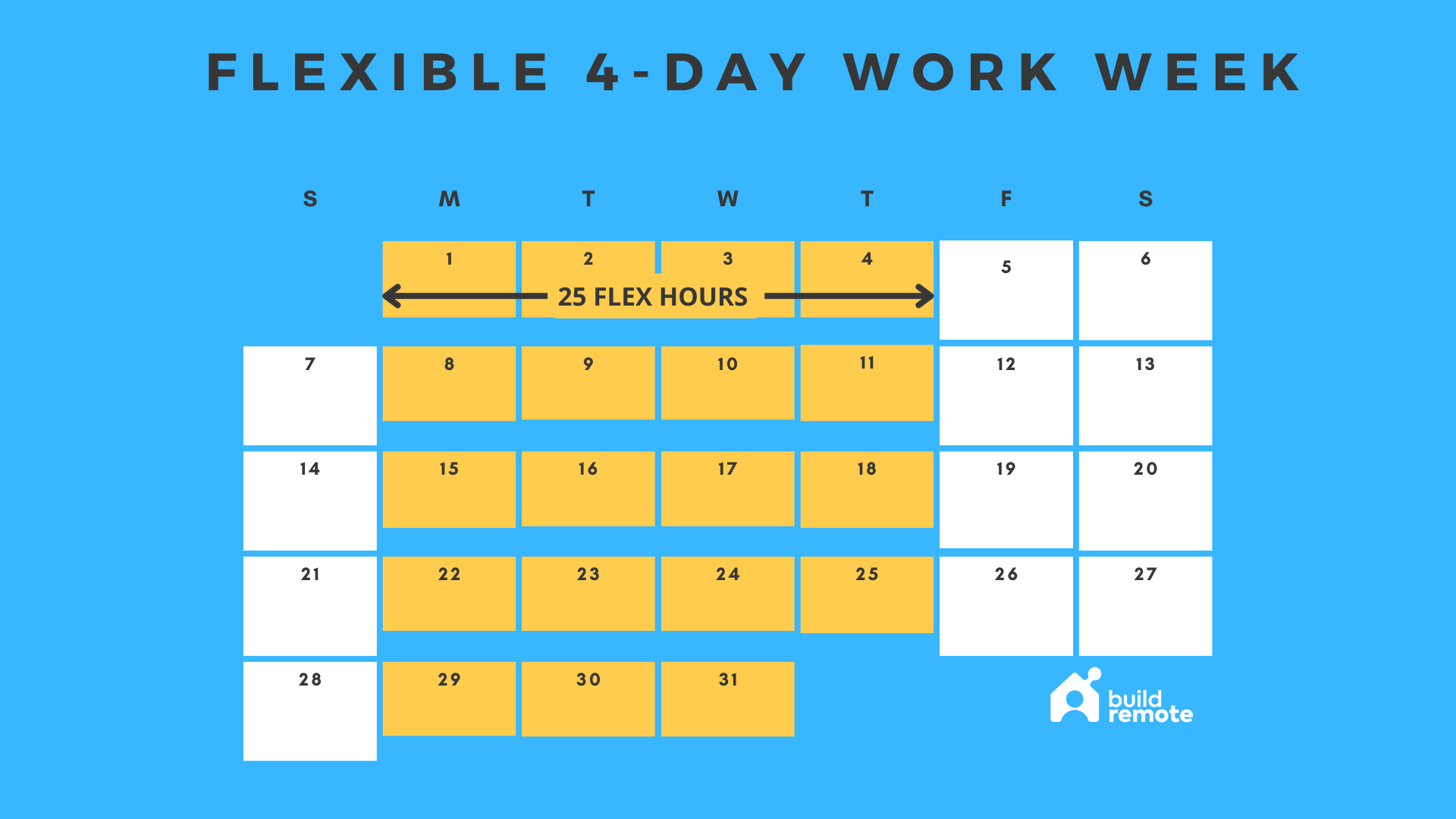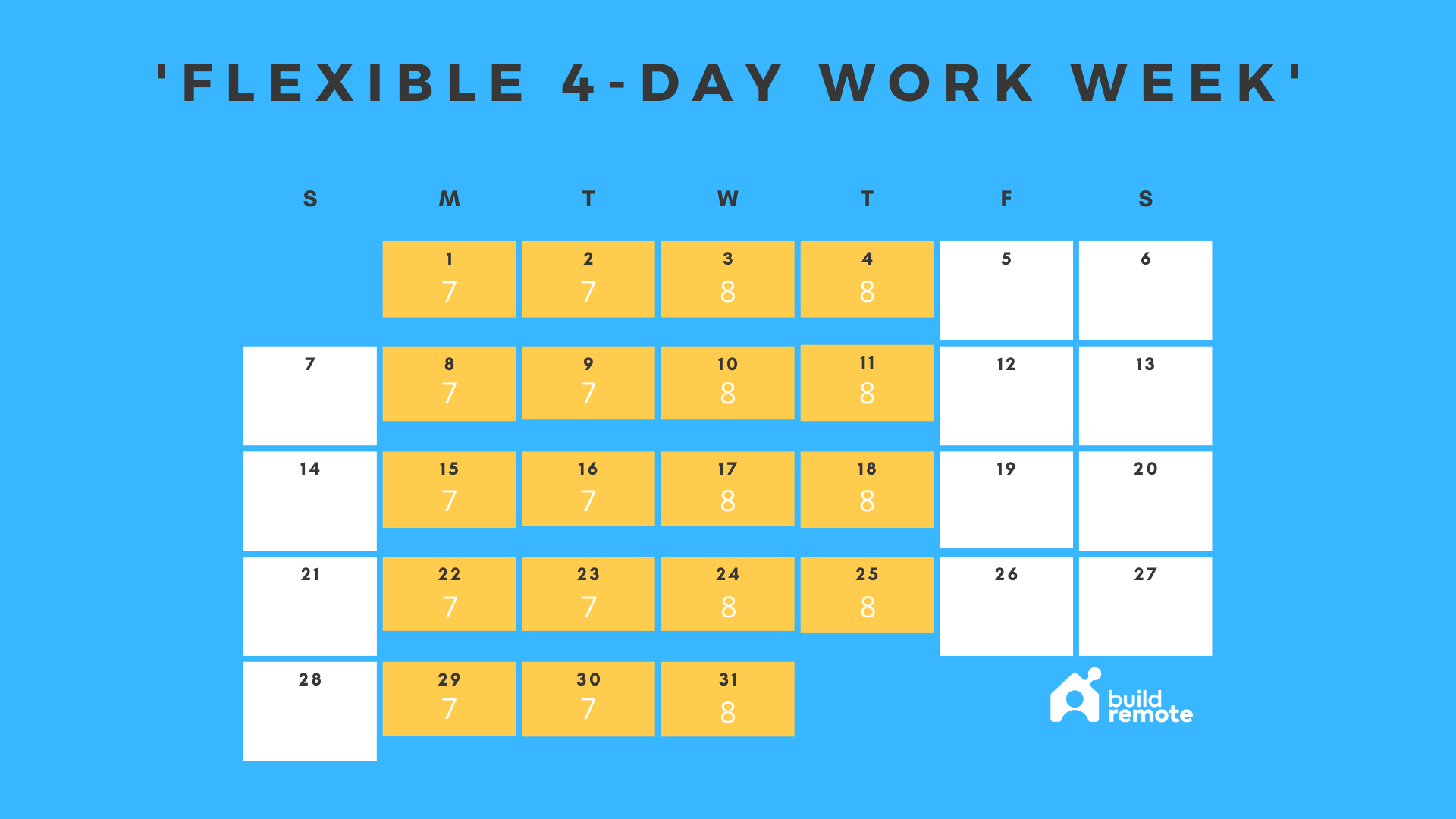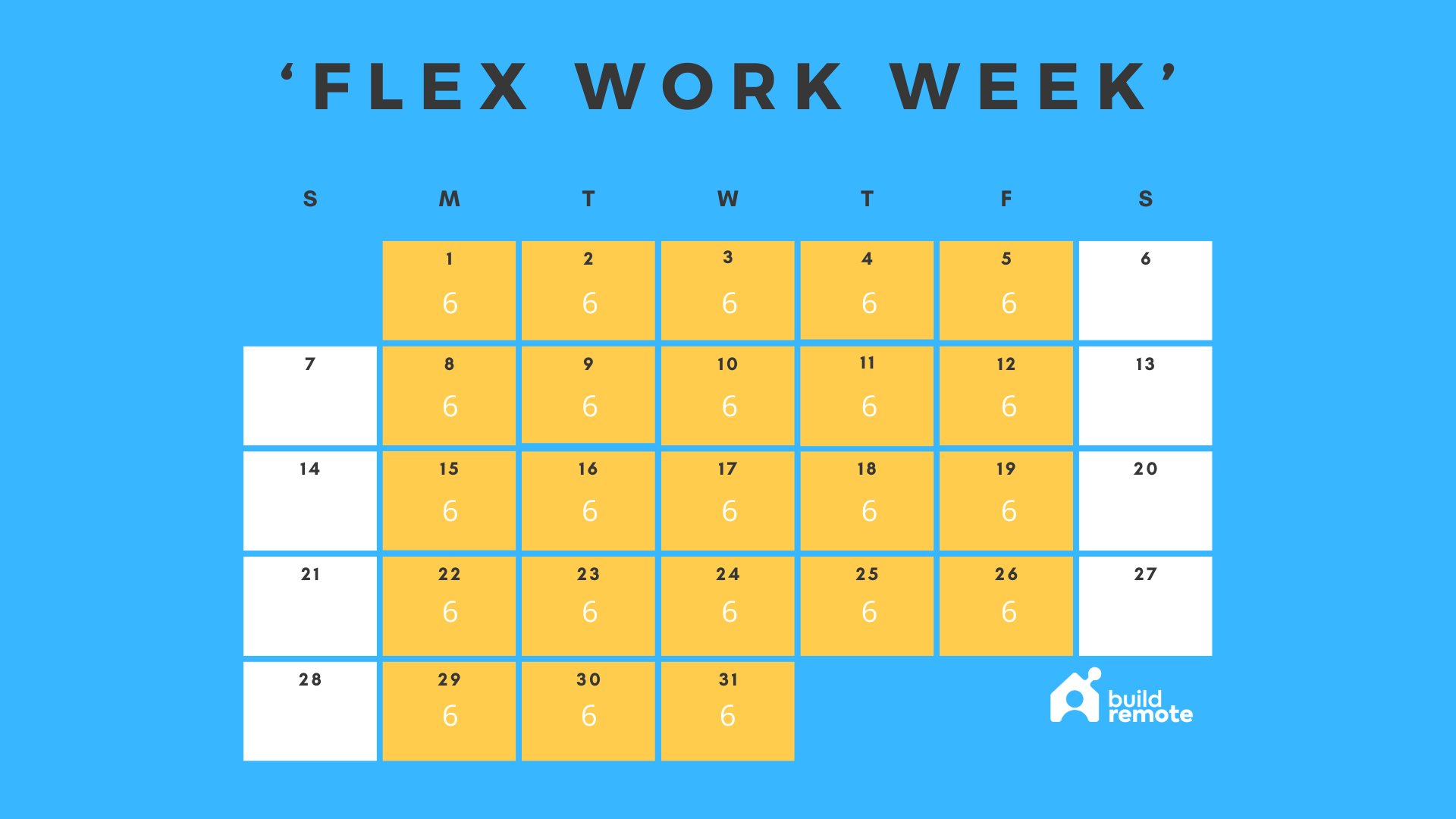Flexible Work Schedule: How To Implement & Policy Examples

In this report, we cover flexible work schedules in depth for managers at companies who are considering a change from the traditional work week.
Starting with Ford Motor Company in 1926, factory workers operated on one of three, eight-hour shifts per day. Assembly lines required synchronous work where all employees worked at the same time. Knowledge work (or, desk jobs) defaulted to the same schedule with just one shift per day – 9 AM – 5 PM, five days per week.
But synchronous work isn’t required for knowledge work. When one salesperson works has little to do with when another works, for example. As a result, flexible work schedules are a natural alternative to the standard 40-hour work week for knowledge workers.
On a flexible schedule, employees have the autonomy to decide when they do their work. Some might start at 7 AM, others at 9 AM, some could take 30-minute lunch breaks whereas others might take two hours, or some might work a compressed schedule over four days while others work five days.
- What is a flexible work schedule?
- Types of flexible work arrangements
- How to set up a flexible work policy
- Benefits of flexible work schedules
- Flexible work schedule examples
- Companies with flexible work arrangements
Flexible vs. alternative vs. compressed schedules
What is a flexible work schedule?
The start time, end time, and when hours are logged are variable for each employee. Employers have an expectation for the amount of hours worked, but not when the hours are worked.
Types Of Flexible Work Arrangements
If your company is thinking about implementing a flexible work schedule, there are a number of options to choose from:
Gliding schedule
Employees choose their start and end times, then stick with it. Everyone has their own shift, but managers know when to expect each person will be working.
Core hours
The company sets a block of time each day where most employees are expected to be working, particularly for meetings. With employees disbursed across time zones, this might be 11 AM – 2 PM, for example. Employees have flexibility outside of those hours.
Flextime
This policy is popular under hybrid work schedules. Employees can choose the hours they work each day while fitting into a broader company policy like 2/3 hybrid (two days of remote, three days in the office). Other terms or subsets to flextime include:
- Variable day: Employees have an expectation for a certain amount of hours in a given week (like 40) but can change the amount of hours they work on any given day.
- Variable week: Employees have an expectation for a certain amount of hours in a given pay period (like 80 over two weeks) but can change the amount of hours they work within the week.
Part-time jobs
Positions that require less than full-time hours are inherently flexible work arrangements. The employee typically gets paid by the hour and can adjust their hours by week to get the work done.
Job sharing
If a company has a full-time role that needs to be filled (40 hours per week), they could have two part-time people fill the role. This offers flexible work to those in the job sharing roles.
See Also: The Ultimate Work Schedule Template Library
Asynchronous work
Asynchronous means “not happening at the same time.” Colleagues perform their jobs at separate times, yet the total project continues to move forward. This is full flexibility for the employee and a company-wide policy.
Alternative work options
One way to implement a flexible work schedule is to offer compressed work schedules and allow employees to choose one. Here are some examples of optional, alternative schedules:
- 4/10 schedule: Four work days per week, 10 hours of work per day
- 9/80 schedule: During a two-week period, employees works 80 hours across nine work days instead of 10 (every other Friday off)
Flex location (hybrid work schedules)
If companies have an office but also allow remote work, they can offer flexibility around work location (in addition to time). Or, companies can allow employees to work from anywhere and give full autonomy over location to their employees.
Important note: The advice within this article is not legal advice. The U. S. Office Of Personnel Management offers legal guidance on flexible work weeks.
See Also: How Many Work Days Are In A Year?
How To Set Up A Flexible Work Schedule Policy
I ran a remote company for six years where we went from a 36-hour alternative work week to a four-day work week and then encouraged asynchronous work. We went through all of the progressions to change from hours to output.
If you currently have an expectation (even if unspoken) for employees to work a traditional schedule like 8-5 but you’d like to give your employees more autonomy to choose their own hours, here is what I recommend:
- Don’t trial a flexible schedule: There are two issues with trialing a flexible schedule.
- First, you would plan to trial it and measure the results. If the trial is a success, you’d implement it permanently. The issue here is the trial biases the results. All of your employees will want the option for a flexible schedule (there is no downside), so you trial will skew results. In other words, it will work better than a standard week because people want it to, thereby defeating the purpose of the trial.
- Second, on the off-chance it doesn’t go better, you have to go back to your employees and say, “We offered you flexibility and it didn’t work. You need to work a set schedule again.” That is bad for morale and erodes trust – “We still need you to come back in like school kids because you couldn’t do it like adults.”
- Take permanent, small steps toward a flexible schedule: Rather than trialing it, implement small steps of flexibility that you won’t need to remove. For example, you could implement a “no meeting Friday.” The policy would encourage people to make Fridays flexible for deep work without interruption. If that goes well, you could move weekly meetings to bi-weekly to free up more time for flexibility. If that goes well, you could implement a policy that people don’t need to be on Slack all day. Encourage people to log out of chat tools to focus on their work. At the end of multiple smaller steps, you are virtually at full flexibility. The final step would be to announce the new flexible work schedule company-wide.
- Implement an accountability chart: When you switch from set schedules to flexible ones, you are really switching from managing hours to managing output. That is what you need to get right. How do you manage to output? Make sure every single role is defined well: What are they solely responsible for to make the company operate well? Are there any responsibilities that two people share? (If two people are responsible, no one is.)
- Document your processes: When everyone works at the same time, you can pop in (whether that’s on Slack or an office stop-by) to ask for help from a colleague. When people are on at different times, you need processes to fill the gap. When a recurring task takes place at your company, it should be recorded step-by-step in one central location that everyone can access. Over time, you’ll have a manual to how to run every part of your business. Rather than asking a friend for some help, people can access the process manual. That frees up people to work flexible schedules.
- Reduce your meetings: Meetings are synchronous – they require everyone to be on at the same time. If you were to offer flexible work schedules to your employees but everyone had full days of meetings, there would be no flexibility and the new benefit would fall flat. Therefore, you need to re-do your culture around meetings: What are they used for? Which ones can get cut in half or moved to every other week? Which ones need to go away completely? Can X, Y, or Z be done without a meeting? When you rethink your meetings, you remove a hurdle for truly flexible schedules.
- Discourage “availability”: When we got Slack as a company, we didn’t have any policy around it. That was a mistake. People started to say hello when they came online, stayed on most of the day, and said goodbye when they logged off. Unintentionally, Slack can turn into a digital punch clock. To prepare for a company-wide flexible schedule, you need to discourage people being available all the time. That lends itself to shift work. At asynchronous companies, you need to set up systems where people can get their work done at different times without that being a hindrance. Therefore, start by telling people to log out of the notification-based tools like email and Slack. Get your work done and don’t worry about being online for your colleagues. Once you do that, you will see where you need to fill in the gaps to keep the work flowing while people work different hours.
Implementing a flexible work schedule policy is similar to implementing a four-day, 32-hour work week. I cover these recommendations in more detail in our article about implementing the four-day week.
Benefits Of Flexible Work Schedules
- Empowering to employees: If companies want to retain good people, they need to empower them fully to do their jobs without supervision. A flexible work schedule provides the structure to do that.
- Trust-building for your team: Trust is most likely the most important aspect of company culture. If everyone trusts each other to do their jobs well and managers trust employees, people are happy and do good work. A flexible schedule makes it easier for trust to be built because you are allowing people to choose when they work. You trust them.
- Optimizes the work hours based on energy levels: Some people work best from 5 – 8 AM others from 8 – 11 PM. We all know this to be true, which makes the 9-5 sound even more absurd in that context. A flexible schedule allows for people to choose when they are most effective based on their energy levels. This should lead to better productivity since each person has the chance to optimize for their own energy levels.
- Better fits the needs of each employee: Some employees need to get their kids off to school. Others have always wanted to join the 2 PM workout class but never could. Some get a second wind at night. If you offer a flexible schedule, people can make their life and job work better together based on their own needs and wants.
- Better work-life balance: If everyone at a company needs to work from 8:00 AM – 5:00 PM, for example, sacrifices need to be made. Nearly every employee will give up something they like or need to do in order to fit into the schedule. Flexible schedules allow for a better work-life balance, or alignment, for everyone.
- Good tool for hiring: Most people want a flexible schedule (or at least the option for one). That benefit will help your company stand out in a crowded job market.
Flexible Work Schedule Examples
Below, you’ll find flexible work schedule examples in three categories:
- Compressed work schedules you could offer your employees to increase flexibility (40 hours, fewer days)
- Schedule ideas to offer if your company offers flexibility (40 hours in a unique format)
- Flexible schedules that entrepreneurs work (not 40 hours per week)
Compressed work schedules
Here are schedules you could offer your employees to increase flexibility (without giving full flexibility). These schedules compress 40 hours into fewer days of work.
4/10 work schedule
An employee works 10 hours a day over the course of four days, then is off for three days each week.
Learn more about the 4/10 schedule.
9/80 work schedule
During a two-week period, the employee works 80 hours across nine days instead of 10. The most common way to do this is four nine-hour days followed by an eight-hour Friday. The next week, employees work four nine-hour days, followed by a Friday off.
Learn more about the 9/80 schedule.
Unique 40-hour schedules if you’re looking for flexibility
If your company already offers a flexible schedule policy and you’re looking to mix up your daily routine, the schedules below are uniquely formatted 40-hour work weeks you could try.
Self-controlled 40
40 hours per week over Monday, Tuesday, Wednesday, Thursday, Friday, Saturday
- First 20 hours: 9:00 AM – 1:00 PM each weekday
- Remaining 20 hours (optional): 4:00 PM- 8:00 PM slots
Sometimes these are shortened, skipped or extended. Sunday is a non-negotiable free day. Saturday is usually free, but I have found that I sometimes have energy left for some catch-up work.
– Kaelum Ross of What in Tech
See Also: Working 7 Days A Week?
The five-day special
40 hours per week over Monday, Tuesday, Wednesday, Saturday, Sunday
- Monday – Wednesday: 10 hours per day
- Thursday: Off
- Friday: Off
- Saturday: 5 hours
- Sunday: 5 hours
“I work three ten-hour days (Monday to Wednesday), five hours on a Saturday, and five hours on Sunday to catch up on paperwork. I call it the five day special — it leaves a two-day block free to enjoy some much needed downtime. The new schedule has made me more efficient, easier to be around and a better person, both personally and professionally.
– Michael Rose of Hach & Rose
Friday lite
45 hours per week over Monday, Tuesday, Wednesday, Thursday, Friday
- Monday – Thursday: 10 hours per day
- Friday: 5 hours
“I embrace a Friday-lite approach to the end of the workweek. Crushing it Monday through Thursday allows me to spend Fridays in solitude, planning for the week ahead.”
– Jason Sherman of TapRm
Flexible entrepreneur schedules
These are non-traditional work schedules (more or less than 40 hours) that entrepreneurs submitted to Buildremote. If you work for yourself and would like to inject some creativity to your daily routine, check out the options below.
Flexible 4-day work week
25 hours per week over Monday, Tuesday, Wednesday, Thursday
“After many years in the corporate world working well over 40 hours a week, I realized I was not productive 100% of the time. I run my own business now, which allows me to work on my own schedule while being productive 100% of the time. It turns out Mondays through Thursdays are my most productive days. I don’t necessarily stick to these four specific days or to specific times during the day, which is why flexibility is the name of the game. This also allows me to have free time I can spend on hobbies and with my loved ones. My team also works on a similar flexible four-day schedule.”
– Rym Benchaar of My Coach Rym
Flexible 4-day work week
30 hours per week over Monday, Tuesday, Wednesday, Thursday
“The purpose of my schedule is to be as flexible as possible to help with my kids. If my toddler needs to take a nap but is struggling to fall asleep, I can take him on a bike ride. If my baby is having a hard day, I can take over for a few hours while mom takes a nap, etc.”
– Corey Noyes of Balanced Capital
Flexible 5s
25 hours per week over Monday, Tuesday, Wednesday, Thursday, Friday
“I usually work around 4-5 hours per day, but not during a specific time frame. For example, I might go through my email in the morning for an hour or two. Then I’m off from work until I need to brainstorm a project with the team in the afternoon. Sometimes I respond to emails again it the evening. This is one of the reasons I started my own business — because I can enjoy freedom and flexibility when working.”
– Yeremia Poco of Eggplain
Flex work week
30 hours per week over Monday, Tuesday, Wednesday, Thursday, Friday
“My work schedule gives me just the right balance between my personal and professional life. I can still be hands-on with my company and also enjoy my time with my family. It’s a great choice for people like me who have been in the industry for decades.”
– Nunzio Ross of Majesty Coffee
You-shaped schedule
15 hours per week over Tuesday, Wednesday, Friday
“For years, I worked as much as I could, trying to squeeze as much out of myself as I possibly could. However, my health started to go downhill — not to mention my mental health! After becoming a mother, I was determined to break this harmful pattern and show my kids I could be successful without burning myself out or ruining my relationships in the process. That is why I prefer the “you-shaped” or “me-shaped” work schedule. It fits my family as well as my personal needs.”
– Susanne Grant of Grant Method Coaching
Companies With Flexible Work Arrangements
“Flexible work arrangements” and “flexible work schedules” seem to be the term that the government uses in employment laws. “Asynchronous work” is what the cool kids (startups) use these days. It all means the same thing – employees can set their own work hours.
These companies have declared themselves to work asynchronously which means “not happening at the same time.” In other words, everyone on the team works when they feel like it, not during set hours. If you’d like to learn more about how those organizations work, here is a list of companies with flexible arrangements.
Company | Source | Jobs | Story |
Almanac | "Our society's way of working is broken. Constant meetings, outmoded communication workflows, and dysfunctional processes have led to distraction, exhaustion, and burnout." | ||
Automattic | "At Automattic, we use a variety of tools to communicate effectively and keep our business running smoothly, including P2s (internal blogs running the P2 theme for WordPress) for asynchronous communication." | ||
Gumroad | "Going fully remote was nice, but the real benefit was in going fully asynchronous." | ||
Buffer | "There are many things we learned throughout our journey with asynchronous communication about what works well and what doesn’t, including plenty of additional benefits beyond timezone flexibility that we had never predicted." | ||
Trello | "Trello is a remote-first company, and the content team I work with uses the tool to assign blog posts and manage the workflow of freelance writers like me. We don’t have (or need) any meetings, rarely exchange emails, and as long as I turn in my articles on time, it doesn’t matter where or when I do my work." | ||
Toggl Hire | Juste Semetaite of Toggl Hire | "As a fully remote company, we champion a results-driven approach to work.
| |
Doist | "While I think remote work is the future, I believe that asynchronous communication is an even more important factor in team productivity, whether your team is remote or not. Not only does async produce the best work results, but it also lets people do more meaningful work and live freer, more fulfilled lives." | ||
Vibe | "As a remote team at Vibe, we’ve done our share of both sync and async communications.
| ||
Lyne.ai | "At Lyne, we're happy to announce that our team has decided to adopt the async-first method of working. We believe that this will offer us many benefits, including better collaboration and more focus. For us, working async offers a new way to work that has been designed with the needs of today's knowledge workers in mind. | ||
Gitlab | From the Gitlab handbook, "Take initiative to operate asynchronously whenever possible. This shows care and consideration for those who may not be in the same time zone, are traveling outside of their usual time zone, or are structuring their day around pressing commitments at home or in their community." | ||
Firstbase | "Companies that replicate the office environment remotely will fail. The instantaneous gratification of adult kids club distraction factory offices make people feel busy without allowing them to be productive.
| ||
Remote | "Async work should be used more often than sync work, it provides better resource management, reduces waste and therefore optimizes productivity." | ||
OpenCraft | "OpenCraft endeavours to make as many of our processes as asynchronous as possible so that no one has to work outside their preferred hours. Our sprint planning process is asynchronous), and while you may occasionally need to meet with a teammate or client outside your preferred time window, it's not the norm." | ||
Blind | "When async-first professionals can focus on delivering impact without the distractions of meetings or pressures to respond instantly or show you are working, you see the benefits of being asynchronous." | ||
Hicollectors | Email from Scott Steward, CEO of Hicollectors | "Async-first encourages thoughtfulness because the recipient has time to receive the message, think it through, and offer the response they feel is the best." | |
Levels | "Levels is not just asynchronous by default, it "fights" meetings, Slack, and excessive emailing. Though not entirely outlawed, "synchronous" communication is treated warily and often assumed to be counter-productive." | ||
Float | "Asynchronous communication, minimal viable process, and documentation are our default. Our goal is to deliver new features to our customers that offer a best-in-class product without the bloat." | ||
RevenueCat | "One way we communicate asynchronously is through documentation. We write our internal documentation in Notion, and we constantly update it so the information is accurate and complete." | ||
YAC | From producthunt.com: | ||
Figma | "Figma can credit much of its fast-growing user base $10B valuation to their uncommon ability to build delight, purpose, and excitement with software. What’s even more impressive is the fact that they’re building a lot of their product async." | ||
15five | "I believe this is because communication from leadership appears more formal in a remote asynchronous environment. Here’s what we’re trying at 15Five to make our leaders more available to our people." Ray Charles of HouseHoldAir for the tip. | ||
ZenMaid | "Personally I don’t enjoy meetings all that much but I do think they are useful. We have an exec call and each department will have a weekly call on Monday or Tuesday. Then we’re usually pretty free the rest of the week. Outside of that, it’s all asynchronous communication," Amar Ghose, CEO of ZenMaid, said on the podcast. | ||
ZipMessage | "I'm personally pretty minimal when it comes to meetings and calls. They are important to have, but I think most meetings are unnecessary," Brian Casel, Founder at ZipMessage, said on the podcast. | ||
Lokalise | "...it made sense for us to embrace asynchronous work ourselves. Over the last 18 months, we’ve learned a few lessons on how to best implement systems and processes to allow employees to work in their own time." | ||
Expensify | "Barrett shares how he's kept the headcount to 140 while generating over a million dollars of revenue per employee, how an employee-first acquisition model was their key to growth, and how an asynchronous work culture means the sun never sets on the Expensify empire." | ||
Frontastic | "Asynchronous communication first: Our first lines of communication are tools like Slack and Notion. We document everything and we openly share it, | ||
Customer.io | "Our team members are globally distributed across six continents and over 34 countries. We value synchronous and asynchronous work schedules and offer flexible hours, enabling our team members to choose a schedule that best fits their lives." | ||
MailerLite | "Every team member is free to live and work anywhere in the world. Our asynchronous communication means we can respond to messages on Slack within 24 hours and shift into focus mode." | ||
Shopify | "As employees return from holiday break, the Canadian e-commerce firm said it’s conducting a “calendar purge,” removing all recurring meetings with more than two people “in perpetuity,” while reupping a rule that no meetings at all can be held on Wednesdays." | ||
Maze | "Maze is a fully remote team, spread across the whole planet. We have Amazings in 35+ countries, and counting! Work wherever, whenever you’re happiest and most productive." | ||
Range | "We seek to empower asynchronous communication at scale — preventing silos forming while avoiding the overwhelm of meetings and the digital firehose." | ||
Hotjar | "Our default meeting style is asynchronous through Slack. We rarely have meetings with only one person presenting." | ||
Kinsta | "At Kinsta, our teams embrace asynchronous communication (a necessity when your coworkers might live 3 time zones away!)" | ||
Harvest | "As a fully remote company, we rely heavily on asynchronous communication. Remote working means you’re self-disciplined and like the autonomy that comes from working wherever your travels take you!" |
Flexible vs. alternative vs. compressed work schedules
Back to the legal speak here for a minute. Most people still work a traditional 40-hour work week. For companies that don’t, there are a few terms to describe what they do. They are overlapping and jargon-y, but they all mean slightly different things. Here are some simple definitions:
- Flexible work schedule: The start time, end time, and when hours are logged are variable for each employee. Employers have an expectation for the amount of hours worked, but not when the hours are worked.
- Compressed work schedule: A standard amount of hours per week (40) or pay period (80) but condensed into fewer work days. Example: Four, 10-hour work days with Friday off.
- Alternative work schedule: This is a catch-all term that describes the ones you see above (flexible + compressed)
See Also: 55 Places For Work From Home, Make Your Own Schedule Jobs
Please note: This article is intended to give advice on how to think about your work schedule as it relates to productivity, employee happiness, and culture. Nothing in this article should be considered legal advice. Please talk to your attorney or consult your country/state’s guidance on work schedules.
Did you enjoy this article? Hover over the image below to pin it!
